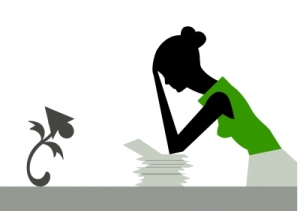
I wrote about considering Nimbus Note as an Evernote (EN) replacement in my last post, and you’ll get the detailed review I promised in my next post. I gave it a thorough trial, but I didn’t neglect to test other possibilities. I tested Ulysses, OneNote, and Bear as well. Somewhat to my own surprise, I’ve settled on Bear.
As an ADHD non-student adult, I have some different needs for a notes app.
- My primary need in a notes app is not writing-related. As long as typing doesn’t suck, I’m fine. But everything—everything—goes into my notes. Research. Project planning. Grocery lists. I take photos. I scan documents. I clip from the web. I use Siri dictation. I handwrite and scan the images. I seldom actually type a note. In short, I need a lot of different ways to get information in, plus fast, legible retrieval.
- I’m poor at categorising. I use big obvious buckets—”Recipes” “Writing” “Everything else”—yet sometimes I still miscategorise (I found a chapter outline in my Recipes folder yesterday.) Search needs to “just find it,” fast, no matter where I put it.
- I have vast amounts of data—2,200 notes and counting, a total of about 2.5 Gb.
- I need it all the time.
With these priorities in mind, here’s how the candidates stacked up:
- Nimbus Notes: Web, Mac, PC, Android, iOS. This is the one I ought to have liked best, based on my research prior to testing. Its editor is not bad for a block editor. And it was fast (or faster than EN is now—a pretty low bar). Its price point was apparently lower than Evernote. Nonetheless,
- Its pricing is based on total traffic rather than simply on upload traffic. With 2.5 Gb data and three devices to sync, I blew through 5 Gb of traffic fast.
- Several of my transferred notes clipped from Wikipedia were illegible, with images overlapping text. I don’t have time to pretty it up just so as to read my research.
- Getting stuff into Nimbus Notes was a pain. Its client apps are just not well-integrated into either the Apple universe or the Web app universe. I could have dealt with one, but not both.
- OneNote: Web, Mac, PC, Android, iOS, and probably others. I gave it a go. It does have handwriting indexing, after all.
- It connects well, but only to the Microsoft universe. I visit Microsoft Universe as little as I can.
- OMG, its editor sucks! You tap or click accidentally in the middle of the page, and you start typing right there. This is the crap I left Microsoft Word about. Not an editor for someone who prefers Markdown.
- Complex Web clippings were also not legible.
- It’s very hierarchical. My system of big buckets with minimal differentiation would be hard to implement there.
- Ulysses: Mac, iOS. I already pay for a subscription, and it’s often mentioned in note apps lists. It will use Dropbox, to which I also subscribe. I love its writing environment. But…
- Ulysses is very writing-focused. Getting anything other than writing into it is a pain.
- It’s pretty darn hierarchical, for all its tag system.
- It’s less well connected to the Apple universe than you’d think. In particular, it has no Shortcuts actions pre-supplied.
Bear (Mac, iOS):
I didn’t want to like it because it uses iCloud sync, which I despise. Yes, I’m an Apple customer and was an Apple developer off and on for 25 years and I loathe iCloud. There, I said it. Not sorry.
- Yet, Bear uses a real database back-end. Wow! The Bear folks don’t try to roll their own. Further, they don’t try to hide their technology from the Unwashed Masses. Already I’m impressed.
- Its editor… is nicer in some ways than Ulysses’ editor, mostly because it sticks closer to Markdown. It could be a bit more flexible about colour and font, but overall a B+.
- All my old notes are perfectly legible (even though tables I use a lot will get some cleanup.)
- Its tag system is more flexible and less hierarchical than even Evernote’s.
- Retrieval is fast and accurate. It slows down some on my iPhone, but that’s understandable with 3 Gb of data to troll through.
- It’s well connected to the Apple universe. I’ve had no problem getting stuff in.
Is Bear perfect for me? No. Nothing’s perfect. Old Working Evernote would be closer (because I’ve spent 7 years leveraging it) but I’m not likely to get it. Given that, Here’s my Bear wish list:
- An alternate cloud service, either their own or Dropbox. Probably not practical, but if iCloud stops working (as it did last year for a few weeks when Catalina was released) there’s nothing the folks at Bear can do about it except try to keep the customers calm and wait for Apple to… uh, stop being distracted and fix it.
- Search inside images and PDFs.
- Index handwriting.
- iOS search inside notes. My web clippings are often l-o-n-g. Mac Bear does this already.
- Connection to web automation services like IFTTT and Zapier.
- Just a smidgen of collaboration. The ability to share a single tag with one other person would do.
But overall, I’m happy with my choice.










